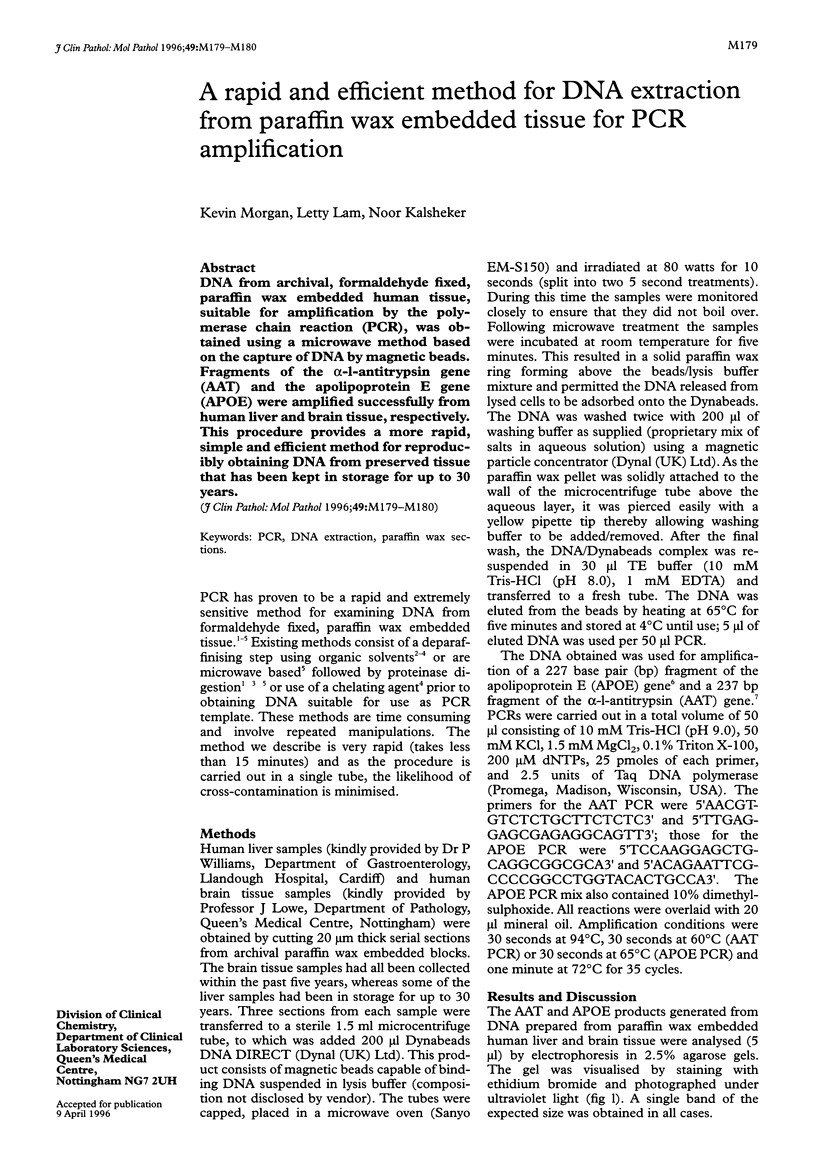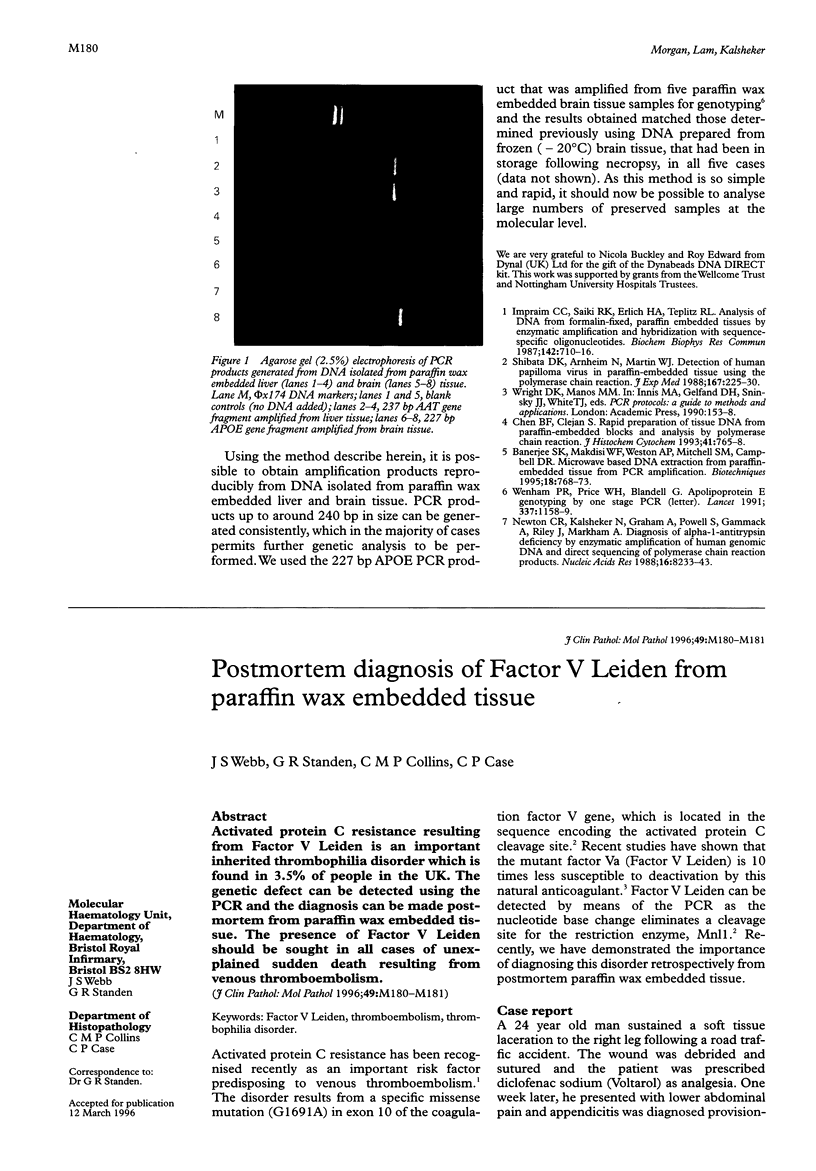Abstract
DNA from archival, formaldehyde fixed, paraffin wax embedded human tissue, suitable for amplification by the polymerase chain reaction (PCR), was obtained using a microwave method based on the capture of DNA by magnetic beads. Fragments of the α-1-antitrypsin gene (AAT) and the apolipoprotein E gene (APOE) were amplified successfully from human liver and brain tissue, respectively. This procedure provides a more rapid, simple and efficient method for reproducibly obtaining DNA from preserved tissue that has been kept in storage for up to 30 years.
Keywords: PCR
Keywords: DNA extraction
Keywords: paraffin wax sections
Full text
PDF

Images in this article
Selected References
These references are in PubMed. This may not be the complete list of references from this article.
- Banerjee S. K., Makdisi W. F., Weston A. P., Mitchell S. M., Campbell D. R. Microwave-based DNA extraction from paraffin-embedded tissue for PCR amplification. Biotechniques. 1995 May;18(5):768-70, 772-3. [PubMed] [Google Scholar]
- Chen B. F., Clejan S. Rapid preparation of tissue DNA from paraffin-embedded blocks and analysis by polymerase chain reaction. J Histochem Cytochem. 1993 May;41(5):765–768. doi: 10.1177/41.5.8385683. [DOI] [PubMed] [Google Scholar]
- Impraim C. C., Saiki R. K., Erlich H. A., Teplitz R. L. Analysis of DNA extracted from formalin-fixed, paraffin-embedded tissues by enzymatic amplification and hybridization with sequence-specific oligonucleotides. Biochem Biophys Res Commun. 1987 Feb 13;142(3):710–716. doi: 10.1016/0006-291x(87)91472-0. [DOI] [PubMed] [Google Scholar]
- Shibata D. K., Arnheim N., Martin W. J. Detection of human papilloma virus in paraffin-embedded tissue using the polymerase chain reaction. J Exp Med. 1988 Jan 1;167(1):225–230. doi: 10.1084/jem.167.1.225. [DOI] [PMC free article] [PubMed] [Google Scholar]
- Wenham P. R., Price W. H., Blandell G. Apolipoprotein E genotyping by one-stage PCR. Lancet. 1991 May 11;337(8750):1158–1159. doi: 10.1016/0140-6736(91)92823-k. [DOI] [PubMed] [Google Scholar]



